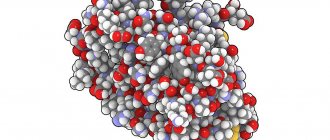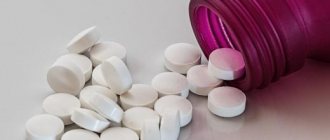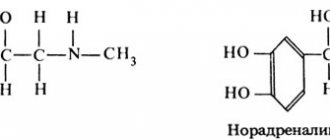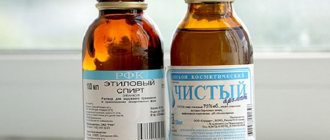Preventive efficacy of recombinant interferon alpha-2b in the context of the COVID-19 pandemic
Summary. The COVID-19 pandemic has caused a global health crisis and continues to cause enormous economic damage. The number of infected people has already exceeded 48 million people, and more than 1 million deaths have been registered. Currently, there is a steady increase in new cases of COVID-19 in the Russian Federation. The new coronavirus infection caused by the SARS-CoV-2 virus has some clinical and immunopathogenetic features. SARS-CoV-2 is a single-stranded RNA virus belonging to the family Coronaviridae, genus Betacoronavirus. COVID-19 can be asymptomatic; the most common clinical manifestation is viral pneumonia; the development of acute respiratory distress syndrome is noted in no more than 5% of cases. The entry gates of the pathogen are the epithelium of the upper respiratory tract and epithelial cells of the gastrointestinal tract. When the virus enters the human respiratory tract, suppression of mucociliary clearance activity and death of epithelial cells is observed, which allows the virus to penetrate the peripheral blood with subsequent damage to target organs (lungs, digestive tract, heart, kidneys). An excessive response of the immune system with massive release of cytokines, which causes acute respiratory distress syndrome, plays an important pathogenetic role during SARS-CoV-2 infection, especially in severe cases of the disease. Clinical and experimental studies have shown that SARS-CoV-2 may be significantly more sensitive to type I interferons (IFN-I) than other types of coronaviruses. IFN-I deficiency is thought to play a key role in the pathogenesis of COVID-19, and several studies have shown that delayed IFN-I signaling is associated with sustained viral replication and serious complications. The use of drugs in this group (IFN-I) for the treatment and prevention of COVID-19 seems relevant for study. Numerous studies have noted the successful use of recombinant interferon α-2b for the prevention of acute viral infections. In order to determine the preventive effectiveness of interferon α-2b with an antioxidant complex in medical workers who have direct contact with those infected with the SARS-CoV-2 virus, a study was conducted. 109 medical workers in contact with COVID-19 patients were observed for a month. For preventive purposes, 75 medical workers took interferon α-2b with an antioxidant complex (vitamins E and C) in various regimens for 10 days, and the comparison group consisted of 34 medical workers without a preventive course. Among medical workers who received preventive therapy with interferon α-2b, only 5.3% of employees were infected with the SARS-CoV-2 virus during the observation period, while in the comparison group without a preventive course, the proportion of those infected with the COVID-19 coronavirus infection was 32. 4% of health workers. The data obtained indicate the high preventive activity of this drug against the new coronavirus infection.
An acute respiratory infection caused by SARS-CoV-2 appeared in China in 2021 and quickly spread throughout the world, presenting global health with the most difficult problem of combating a new infectious agent.
According to statistics, the total number of people infected in the world is more than 52 million, with more than 1.2 million deaths recorded. In some countries, the situation with the number of new cases of infection is declining, while in other countries the epidemic is still gaining momentum. On the territory of the Russian Federation, the number of cases of COVID-19 is growing and currently exceeds 1.8 million people, and the mortality rate is more than 32 thousand people [1].
The new coronavirus SARS-CoV-2 is a single-stranded RNA virus of the Betacoronavirus genus, whose genome has 79% homology with the causative agent of severe acute respiratory syndrome, the coronavirus SARS-CoV-2, discovered in 2003-2004. The high infectivity of the SARS-CoV-2 virus is partly due to new mutations in the receptor-binding domain, namely at the S1/S2 subunit boundary of the S protein [2].
Transmission of infection occurs through airborne droplets (coughing, sneezing, talking). The contact and household route is realized through objects contaminated with the pathogen. A fecal-oral mechanism is possible (the pathogen was found in fecal samples from patients infected with SARS-CoV-2).
Isolation of the virus from a patient begins 48 hours before the manifestation of clinical symptoms and reaches a maximum in the first 1-3 days from the onset of the disease. As a little-studied virus, SARS-CoV-2, in accordance with the current sanitary legislation of the Russian Federation, was previously classified as pathogenicity group II.
The new coronavirus infection associated with COVID-19 can be asymptomatic; viral pneumonia is a common clinical manifestation, and in 5% of cases the development of acute respiratory distress syndrome is recorded. The entry gates of the pathogen are the epithelium of the upper respiratory tract and epithelial cells of the gastrointestinal tract. It has been established that angiotensin-converting enzyme 2 (ACE2) receptors, which are expressed on the surface of the epithelium of the upper respiratory tract, enterocytes of the small intestine, vascular endothelium, macrophages, brain neurons and glia, are of particular importance in the process of virus penetration into target cells.
Today it is already known that the development of lung damage as the main clinical manifestation of infection is determined primarily by damage to type II alveolar cells [3, 4]. When the virus enters the human respiratory tract, suppression of mucociliary clearance activity is observed due to inhibition of the motility of epithelial cilia, which is accompanied by the death of epithelial cells. Next, the virus penetrates through the mucous membrane of the respiratory tract into the peripheral blood with subsequent damage to target organs (lungs, digestive tract, heart, kidneys).
An important pathogenetic significance during SARS-CoV-2 infection, especially in severe cases of the disease, is played by an excessive response of the immune system with massive release of cytokines - a “cytokine storm”, which causes acute respiratory distress syndrome [5, 6]. Cytokine storm is characterized by excessive activation of cytotoxic lymphocytes and macrophages with the induction of proinflammatory cytokines and inflammatory markers C-reactive protein and serum ferritin, which leads to a hyperinflammatory response [6]. Another significant aspect of the immune response in COVID-19 is the suppression of the production of interferons (IFN) types I and III. By probing coronaviruses with various pathogen recognition receptors (TLRs), nuclear transcription factors (factor-κΒ) and interferon regulatory factors 3 and 7 (IRF3, IRF7), the ability of the SARS-CoV-2 virus to stimulate the synthesis of pro-inflammatory cytokines and multidirectional effects on the synthesis were demonstrated interferons type I and III [7]. It has been established that the initial viral load determines the induction of type I IFN at the early stage of COVID-19 infection: a high viral load can suppress the interferon response, and with a low viral load and a normal immune response, effective elimination of the infection occurs. The same study showed that interferon induction is more often impaired in older people [7]. Other authors have found that the SARS-CoV-2 virus inhibits the production of its own interferon, which reduces antiviral activity, activation of regulatory cells, triggers hyperactivation of macrophages with hyperproduction of cytokines and causes an imbalance in the immune system [8]. IFN-I deficiency is believed to play a key role in the pathogenesis of SARS-CoV-2. Delayed IFN-I signaling has been shown to be associated with sustained viral replication and serious complications.
According to some authors, in vitro studies suggest that SARS-CoV-2 may be significantly more sensitive to type I IFN than other respiratory viruses and coronaviruses. Prophylactic intranasal administration or inhalation of recombinant interferons may limit viral replication in the upper respiratory tract, and supplemental type I IFN may also be useful for pulmonary involvement.
To date, specific prevention of COVID-19 has been developed - two vaccines have been registered in the Russian Federation - “Gam-COVID-Vac” and “EpiVac-Corona”. Large-scale production of these vaccines is just gaining momentum, and mass vaccination will not begin soon. At the beginning of the pandemic, then in the absence of specific prevention and with an increase in the number of infections among medical workers, it seemed very relevant to use long-standing and successfully used drugs for the prevention and treatment of acute viral respiratory infections. Viferon - recombinant interferon α-2b - is one of the well-studied drugs with proven clinical and immunological effectiveness. The combined use of nasal and rectal forms of interferon α-2b with antioxidants in previous studies revealed a strong tendency to accelerate the regression of fever and intoxication, and also more effectively prevented repeated hospitalizations for acute respiratory infections during a 3-month follow-up [9, 10]. The use of a combination of rectal and topical forms of interferon α-2b (Viferon) for the prevention of a new coronavirus infection during the COVID-19 pandemic is quite justified, and studying the effectiveness of such a preventive course was the purpose of this study.
The purpose of this study was to evaluate the preventive effectiveness of recombinant interferon α-2b (Viferon) in the context of the COVID-19 pandemic in healthcare workers.
Material and research methods
Under observation were 109 medical workers of Clinical Hospital No. 2, in contact with patients with COVID-19, aged from 25 to 60 years (average age - 39.2 ± 4.9 years), 26 men and 83 women. Of these, 75 were medical workers who, for preventive purposes, were prescribed a course of taking interferon α-2b (Viferon) for 10 days in various combination regimens of rectal and topical forms. The subjects were divided into three groups depending on the preventive course regimens chosen by the medical workers themselves: 15 people (20%) agreed to take only Viferon gel for topical use - intranasally 2 times a day, 45 (60%) medical workers agreed to a combination of interferon α-2b in the form of a gel 2 times a day intranasally and suppositories 1 million IU rectally 1 time a day on weekdays, 15 (20%) health workers received Viferon intranasally in the form of a gel 2 times and rectally in suppositories 1 million IU 1 time a day daily, and on the day of duty, a suppository of 3 million IU rectally once a day. The comparison group consisted of 34 medical workers who refused the preventive course (Fig.).
Observation lasted for 1 month. All healthcare workers underwent a weekly nasopharyngeal and oropharyngeal swab test to detect SARS-CoV-2 RNA by polymerase chain reaction (PCR) using the AmpliSens® Cov-Bat-FL reagent kit.
The examination of infected medical workers was carried out in accordance with the temporary methodological recommendations “Prevention, diagnosis and treatment of new coronavirus infection (COVID-19)”. Verification of the diagnosis was carried out by PCR using nucleic acid amplification, and AT-SARS-CoV-2 IgM, IgG was also determined using the ELISA method. Instrumental diagnostics included pulse oximetry to assess the severity of hypoxemia, as well as chest computed tomography (CT) in all sick health workers.
Results and discussion
In the group with a prophylactic course of interferon α-2b, there were 17 (22.7%) men and 58 (77.3%) women aged 25 to 60 years, the average age was 38.9 ± 4.2 years. In the group without a prophylactic course there were 9 (26.5%) men and 25 (73.5%) women, the average age was 40.4 ± 3.9 years.
In the group with a preventive course of interferon α-2b, 4 (5.3%) medical workers infected with SARS-CoV-2 were identified (1 man and 3 women). At the same time, three sick health workers used only Viferon gel locally intranasally 2 times a day and 1 health worker used a combination of rectal (suppositories 1 million IU) and topical forms. SARS-CoV-2 virus RNA was detected in 2 women in the first week, 1 woman in the second week, and 1 man in the fourth week (table). All infected health workers report a violation of the Viferon prophylactic course regimen (multiplicities and combinations). In the group of health workers without a preventive course of interferon α-2b, the proportion of cases of COVID-19 was 32.4% (11 out of 34 health workers) (Fig.). The number of patients and the timing of detection of SARS-CoV-2 virus RNA in healthcare workers are presented in the table.
When assessing the severity of COVID-19 in 4 sick medical workers who received a preventive course, asymptomatic infection was found in three and degree 1 lung damage was found in one according to computed tomography (Fig.). In the group of medical workers without prophylaxis, all 11 medical workers with COVID-19 developed bilateral pneumonia of varying severity according to CT data: 5 patients had CT-1, 3 had CT-2 lesions, 2 health workers had CT-3 and CT- 4 – in one patient (Fig.). No asymptomatic disease was observed in this group. The results of the study in the comparison groups of medical workers in an infectious diseases hospital are presented in Fig.
A pronounced preventive effectiveness of the use of interferon α-2b was revealed in various schemes, both for local use in the form of a gel (3 out of 15 fell ill), and in a combination of rectal and topical forms of interferon α-2b (1 out of 60) compared with a group of medical workers without preventive therapy (11 out of 34).
Such results are expected and coincide with our previously obtained data on the effectiveness of interferon α-2b in ARVI [9, 10] and with the opinion of other researchers. Thus, experimental studies conducted in in vitro format suggest that SARS-CoV-2 may be significantly more sensitive to type I IFN than other respiratory viruses and coronaviruses. It is assumed that prophylactic intranasal administration or inhalation of recombinant interferons can limit viral replication in the upper respiratory tract.
Many researchers are actively studying the effectiveness of interferons and the possibility of using IFN in treatment regimens for COVID-19. Annsea Park and Akiko Iwasaki [7] in their study noted the effect of the combination of lopinavir/ritonavir and interferon α-2b in the form of inhaled IFN. A number of authors show the potential of using IFN λ for the treatment of coronavirus infection SARS-CoV-2 both in patients with mild disease and in patients with varying degrees of severity of pneumonia [11]. Other authors show the potential of using IFN λ for the treatment of coronavirus infection caused by SARS-CoV-2 in patients with both mild disease and varying degrees of severity of pneumonia [11].
In China, recommendations from various authors have been published for the treatment of COVID-19 by administering 5 million units of recombinant interferon α by steam inhalation twice a day in combination with ribavirin [12, 13]. Administration of IFN drugs by various routes (vapor inhalation, intravenous and subcutaneous routes) has varying effectiveness. The interferon drugs themselves are well described and have already proven their safety in several clinical trials [14]. E. Mantlo et al. their study assessed the antiviral activity of type I IFN against infection caused by SARS-CoV-2. Interferon α and interferon β at a concentration of 50 IU have been shown to reduce viral titers by 3.4 log and more than 4 log, respectively. These data demonstrate the effectiveness of human type I IFN in suppressing SARS-CoV-2 infection, which may provide the basis for future treatment options for COVID-19 [15].
According to the results of our observations, a 10-day preventive course of combined use of interferon α-2b with antioxidants was more effective than a course with only intranasal administration of interferon α-2b in gel form in preventing infection with the SARS-CoV-2 virus during a pandemic, the proportion of those infected in these groups was 1.6% and 20%, respectively. Combined regimens of recombinant interferon α-2b (Viferon) have shown their high preventive effectiveness among medical workers during a pandemic in the absence of specific prevention. The data obtained convincingly indicate the advisability of using the drug Viferon for the prevention of COVID-19 in a pandemic, and in combination with nasal (gel/ointment) and rectal forms of interferon α-2b with antioxidants (suppository) they are more effective for emergency post-exposure prevention of COVID-19.
Thus, the use of recombinant interferon for the prevention of COVID-19 during a pandemic is a promising area for further research.
Literature/References
- Online map of the spread of coronavirus. URL: https://coronavirus-monitor.ru/. [Onlayn-karta rasprostraneniya korona-virusa URL: https://coronavirus-monitor.ru/.]
- Lu R., Xiang Zhao, Juan Li et al. Genomic characterization and epidemiology of 2021 novel coronavirus: implications for virus origins and receptor binding // Lancet. 2020; 395(10224):565–574. DOI: 10.1016/S0140-6736(20)30251-8.
- Walls AC, Park YJ, Tortorici MA et al. Structure, Function, and Antigenicity of the SARS-CoV-2 Spike Glycoprotein // Cell. 2020; 181(2):281-292. DOI: 10.1016/j.cell.2020.02.058.
- Omarova Kh. G., Makashova V. V., Ponezheva Zh. B. et al. Current issues of the pathogenesis of COVID-19 and possible measures to prevent severe forms of the disease // Attending Physician. 2020; 8: 77-82. DOI: 10.26295/OS.2020.77.18.013. The Lechaschy Physician Journal. 2020; 8: 77-82. DOI: 10.26295/OS.2020.77.18.013.]
- Qing Ye, Bili Wang, Jianhua Mao. The pathogenesis and treatment of the `Cytokine Storm' in COVID-19 // J Infect. 2020; 80 (6): 607-613. DOI: 10.1016/j.jinf.2020.03.037.
- Mehmet Soy, Gökhan Keser et al. Cytokine storm in COVID-19: pathogenesis and overview of anti-inflammatory agents used in treatment // Clin Rheumatol. 2020; 39 (7): 2085-2094. DOI: 10.1007/s10067-020-05190-5.
- Annsea Park, Akiko Iwasaki. Type I and Type III Interferons – Induction, Signaling, Evasion, and Application to Combat COVID-19 // Cell Host Microbe. 2020; 27 (6): 870-878. DOI: 10.1016/j.chom.2020.05.008.
- Margarida Sa Ribero, Nolwenn Jouvenet et al. Interplay between SARS-CoV-2 and the type I interferon response // PLoS Pathog. 2020; 16(7):e1008737. DOI: 10.1371/journal.ppat.1008737.
- Akimkin V. G., Korotchenko S. I. et al. Epidemiological and immunological effectiveness of using the drug “VIFERON-gel” for the prevention of influenza and other acute respiratory infections in organized military groups // Epidemiology and infectious diseases. Current issues. 2011; 1:28-36. Epidemiologiya i infektsionnyye bolezni. Aktual'nyye voprosy. 2011; 1:28-36.]
- Kalyuzhin O. V., Ponezheva Zh. B., Kupchenko A. N. et al. Clinical and interferon-modulating effectiveness of a combination of rectal and topical forms of interferon-α2b in acute respiratory infections // Therapeutic archive 2018; 11: 48. Terapevticheskiy arkhiv 2018; 11:48.]
- Evangelos Andreakos, Sotirios Tsiodras. COVID-19: lambda interferon against viral load and hyperinflammation // EMBO Mol Med. 2020; 12(6):e12465. DOI: 10.15252/emmm.202012465.
- Dong L., Hu S., Gao J. Discovering drugs to treat coronavirus disease 2021 (COVID-19) // Drug Discov. Ther. 2020; 14:58-60. https://doi.org/10.5582/ddt.2020.01012.
- Lu H. Drug treatment options for the 2019-new coronavirus (2019-nCoV) // Bioscience Trends. 2021. https://doi.org/10.5582/bst.2020.01020.
- Mager DE, Jusko WJ Receptor-mediated pharmacokinetic/pharmacodynamic model of interferon-β1a in humans // Pharm. Res. 2002; 19 (10): 1537-1543. https://doi.org/10.1023/A:1020468902694.
- Mantlo E., Bukreyeva N. et al. Antiviral activities of type I interferons to SARS-CoV-2 infection //Antiviral Res. 2020; 179: 104811. DOI: 10.1016/j.antiviral.2020.104811.
Zh. B. Ponezheva*, 1, Doctor of Medical Sciences A. A. Grishaeva* I. V. Mannanova* A. N. Kupchenko* S. B. Yatsyshina*, Candidate of Biological Sciences S. V. Krasnova**, Candidate of Medical Sciences Sciences V. V. Malinovskaya***, Doctor of Biological Sciences, Professor V. G. Akimkin*, Doctor of Medical Sciences, Professor, Academician of the Russian Academy of Sciences
* FBUN TsNIIE Rospotrebnadzor RF, Moscow, Russia ** GBUZ IKB No. 2 DZM, Moscow, Russia *** FGBU NICEM im. N. F. Gamaleyi Ministry of Health of Russia, Moscow, Russia
1Contact information
Preventive efficacy of recombinant interferon α-2b in the context of the COVID-19 pandemic / Zh. B. Ponezheva, A. A. Grishaeva, I. V. Mannanova, A. N. Kupchenko, S. B. Yatsyshina, S. V. Krasnova, V. V. Malinovskaya, V. G. Akimkin For citation: Ponezheva Zh. B., Grishaeva A. A., Mannanova I. V., Kupchenko A. N., Yatsyshina S. B., Krasnova S. V., Malinovskaya V.V., Akimkin V.G. Preventive effectiveness of recombinant interferon α-2b in the context of the COVID-19 pandemic // Treating Doctor. 2020; 12 (23): 56-60. DOI: 10.26295/OS.2020.29.66.011 Tags: coronavirus infection, prevention, immunity
Detailed description of the study
Interferons (IFNs) are high molecular weight proteins that have mainly nonspecific antiviral activity. These proteins are produced by white blood cells after activation by viruses, bacteria or specific polysaccharides, proteins and drugs. Interferons have the ability to block viral replication, preventing damage to body cells. IFNs belong to the class of cytokines—small protein molecules that are used in signaling between cells to trigger an immune response against foreign pathogens.
According to the type of receptor with which interferon is able to transmit a signal, they are divided into the first (I), second (II) and third (III) types.
Type 1 interferons include IFN-alpha, including 13 subtypes. All type I interferons bind to a single cell surface receptor, type I IFN. They stimulate the JAK-STAT pathway, triggering the expression of IFN-stimulated genes that are associated with the body's antiviral defense. They have high activity against tumors and viruses, and also exhibit immunomodulatory properties.
Type II interferons, including only gamma IFN, are cytokines that play a huge role in innate and acquired immunity. They are produced by activation of T cells, natural killer (NK) cells and macrophages in response to cytokine stimuli such as IL-12. They have a pronounced immunomodulatory property; protection against tumors and viruses is less pronounced.
Type III interferons include IFN-delta and are divided into four subtypes. The mechanism of their action has been little studied to this day. The interferon response is formed much faster than the body’s specific defense reactions - this is an important indicator of immunity.
Interferon status is a group of indicators that characterizes the functioning of nonspecific immunity (IFN system). Interferon status determines the activity, adequacy and functionality of the interferon system. The activity of this system is reflected by four indicators:
- IFN-alpha secretion level;
- IFN-gamma secretion level;
- Serum IFN secretion level;
- Level of spontaneous IFN secretion.
IFN-alpha and IFN-gamma are assessed using stress tests. To determine these indicators, a specific agent is introduced into the human body to induce the production of interferons. Spontaneous IFN is determined without a specific load. Serum IFN reflects the total IFN content in the blood serum.
Determining a person's interferon status is necessary for several purposes. First, to determine the ability of the immune system to reproduce an adequate immune response in the event of an infectious lesion. Secondly, control the production of interferons at the time of illness. Thirdly, select effective immunomodulatory therapy.
Today, interferon preparations are actively used in medicine. Interferons indirectly induce a cascade of reactions, as a result of which proteins are synthesized that provide active protection against tumors and viruses.




